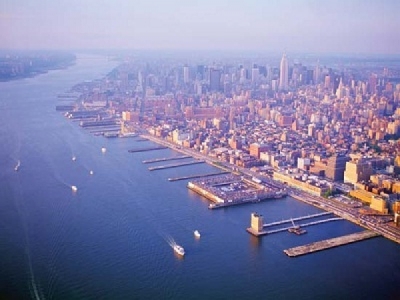
Posted on August 25, 2016
By Michael Virtanen, The Post Star
New York’s conservation chief is challenging the effectiveness of recently completed dredging of contaminated sediment from the upper Hudson River, saying unacceptably high levels of industrial waste were left behind.
Commissioner Basil Seggos said that dredging improved the Hudson but that the federal Environmental Protection Agency needs to re-evaluate the six-year project and get objective analysis in its ongoing review of fish, water and sediment data.
“I think it’s absolutely clear the job is not yet done,” Seggos said. At least 136 acres of river bottom and 35 percent of the PCBs, an oil-like substance discharged from factories in Fort Edward and Hudson Falls, about 40 miles north of Albany, weren’t removed, he said.
His letter to EPA Regional Administrator Judith Enck comes a year after Boston-based General Electric finished dredging a 40-mile stretch of the river for PCBs in the federal Superfund project. Until 1977, GE factories discharged into the river more than 1 million pounds of polychlorinated biphenyls, considered a probable carcinogen.
The EPA said it will review Seggos’ letter and respond in detail but noted that the state Department of Environmental Conservation that he now leads had agreed with the cleanup plan. “If New York State has additional information, the EPA is happy to consider it during the five-year review process, which is currently underway,” EPA spokeswoman Mary Mears said.
Studies show PCBs pose a risk to wildlife in the river ecosystem, including fish, frogs, waterfowl and mink. Though banned in 1977, the compounds once used widely as coolants and lubricants in electrical equipment remain a problem because they do not readily break down in the environment and persist over long periods of time.
The EPA has been collecting samples from fish, water and sediment this year for the review. It is also engaged in a 10-year project to remove contaminated soil from the river’s flood plain.
The federal agency acknowledged in a review five years ago that initial dredging left a significant amount of contaminated sediment still in the river, more than the EPA had anticipated when it decided on project parameters, Seggos wrote. “The remedy as implemented may not achieve the targeted reductions in water and fish PCB concentrations in the time frames anticipated by EPA.”
If the review shows the project failed to meet its goals, there should be more dredging, Seggos said.
New York’s conservation agency has also been taking samples since the dredging stopped last year but doesn’t have those results yet, Seggos said. Advisories to limit or avoid consumption of fish caught in the river both upstream and downstream are insufficient protections, he said.
GE last year finished removing 2.75 million cubic yards of contaminated sediment as part of a 2006 legal agreement with the EPA, which the agency has estimated cost GE about $1.5 billion. Calls by environmental groups to dredge beyond the agreed-to areas grew louder before barges left the river.
Source: The Post Star





